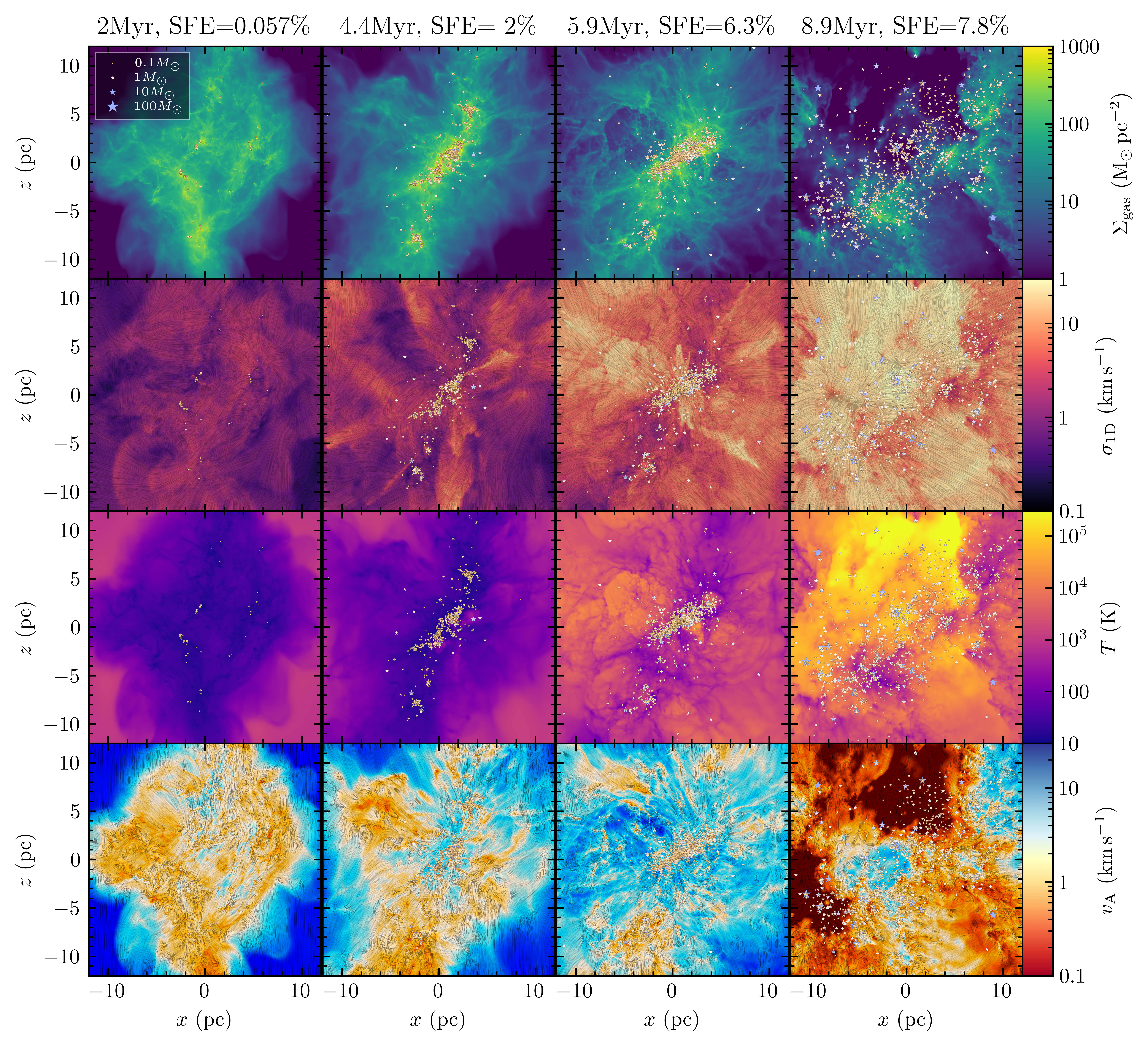
First Star Formation Simulation with All Feedback in Concert
Star formation is difficult to model for several reasons. It involves a wide range of physical processes acting in concert, including gravity, turbulence, magnetic fields, atomic and molecular processes, stellar evolution, and stellar feedback. Worse, the range of length-scales over which these processes operate is large: a single star is about a billion times smaller than the cloud it formed in. Star formation is also largely group activity: stars form in clusters, so it is impossible to reliably model star formation in isolation.
In this paper, we use STARFORGE to perform the first numerical simulation of star cluster formation that accounts for all of the key physical processes in star formation, while resolving a sufficiently-large dynamic range to follow individual stars in a GMC massive enough to form a star cluster similar to the ones forming in the Solar neighborhood. Crucially, we account for all major forms of stellar feedback for the first time. These include:
- Protostellar jets: As stars gain mass, a fraction of it is thrown into powerful bipolar jets and outflows by magnetic forces. These jets can limit the accretion both by carrying mass away directly and by entraining gas out of the core the star formed in. In a previous paper we showed this is key for determining the masses of stars.
- Stellar radiation: Radiation powered by accretion and nuclear fusion can heat up and push around the gas in a star-forming cloud. These effects can influence the properties of stars yet to form, and can ultimately blow the cloud apart and end star formation.
- Stellar winds: Massive stars blow off their outer layers at thousands of kilometers per second, producing a powerful wind that can drive the expansion of bubbles and the disruption of clouds.
- Supernovae: Stars more than 8 times more massive that the Sun tend to end their lives in a massive, energetic explosion known as a Type II supernova. This is the most energetic feedback channel of all in the long run, but it comes later than others.